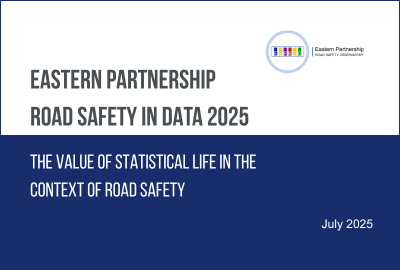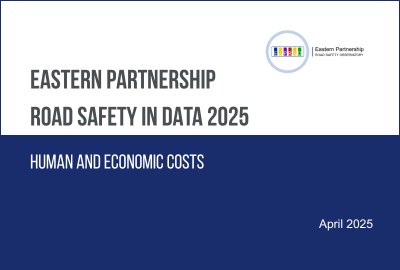
Road traffic death is a devastating and preventable tragedy, and a great loss of human life bringing untold pain and suffering to millions every year. The moral obligation in itself should be enough reason to invest in making our roads safer. But beyond this, investing in safer roads also makes economic sense both from a perspective of reducing costs, but also in generating growth.
Economic costs
In 2008, the International Road Assessment Programme (iRAP) published a discussion paper entitled, The True Cost of Road Crashes: Valuing Life and the Cost of a Serious Injury. The paper aimed to assess the financial burden that road casualties place on a country’s economy.[1] It considers the economic cost of road crashes from the perspective of lost productivity of working-age individuals, as well as counting the costs needed for hospital treatment and rehabilitation, vehicle repairs, and insurance or third-party costs. The methodology presented in this paper, and its subsequent iterations, have been used widely (particularly by high income countries) as a way to estimate the economic costs of road crashes as a percentage of GDP and inform cost-benefit analyses of road safety interventions.
In 2017, the World Bank published a follow up report, The High Toll of Traffic Injuries: Unacceptable and Preventable,[2] attempting to assess the returns from investing in safer road infrastructure. One of the key findings of this report was that a 10% reduction in road traffic deaths can, on average, raise GDP by up to 3.6% per capita. Other assessments put the returns at an even higher rate. However, the key variable is the accuracy of the data that is input into these formulas – particularly in the context of low and middle income countries.
Earlier this year, the World Bank published a new study, The Value of a Statistical Life in the Context of Road Safety, expanding on these methodologies. The study provides a new formula, using a value transfer methodology to estimate the Value of a Statistical Life (VSL) for low and middle income countries based on Gross National Income (GNI) per capita.[3] The OECD identifies this method as the most transparent, with a level of reliability comparable to that of more complex function-based approaches. And while not a substitute for country-specific primary research, value transfer offers a practical and policy-relevant starting point for economic assessments in contexts where local data is limited.
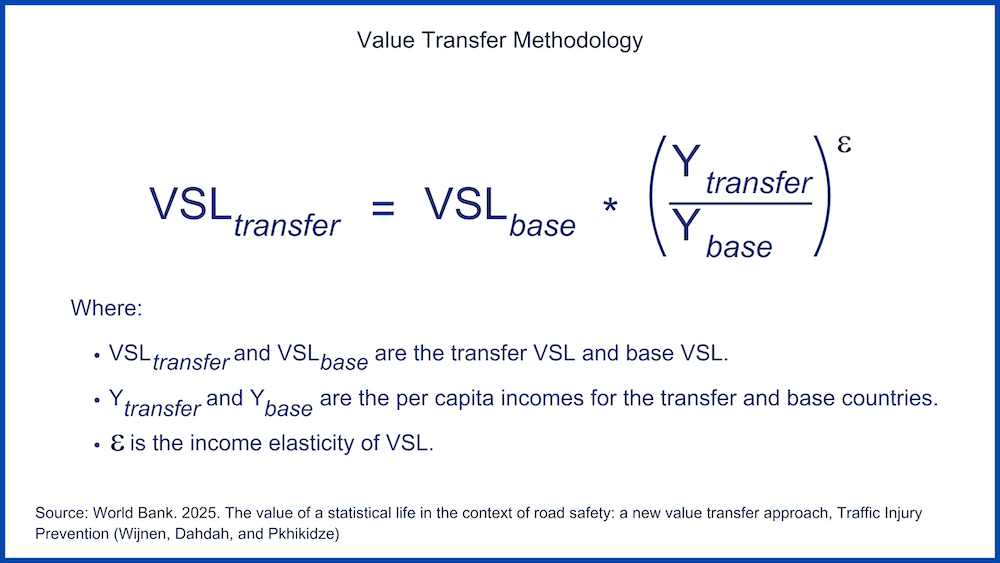
Part of our Observatory’s mission is to support the collection and analysis of accurate data, enabling government stakeholders to properly understand the true cost that road fatalities are having on their country economies. This helps government officials build the case for requesting and allocating funds for road safety as well as supporting the measurement and assessment of investments from a financial perspective. As such, the EaP RSO data team has used the new formula to estimate the VSL for the five Eastern Partnership countries – Armenia, Azerbaijan, Georgia, Moldova, Ukraine.
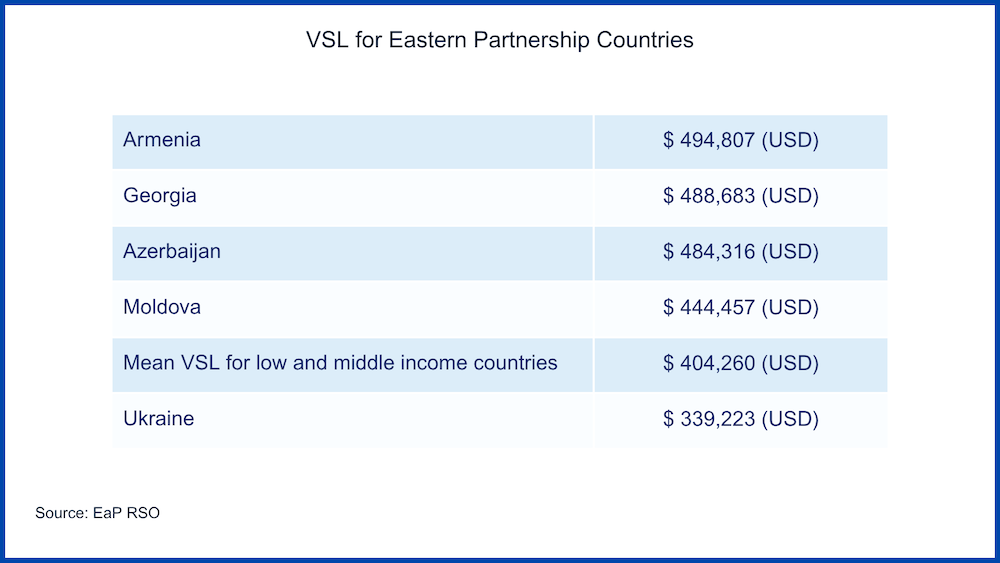
Monetary valuation through VSL enables policymakers to assess trade-offs and prioritise interventions that deliver the greatest safety impact per unit of investment. By incorporating VSL into cost-benefit analyses, governments and stakeholders in the EaP region can better justify and target investments in road infrastructure, enforcement, education, and other safety measures — ultimately saving more lives and achieving better value for money. More detail on the use of the VSL methodology can be found in our EaP RSO data report here.
Based on the McMahon and Dahdah 2008 methodology, which is still widely in use as a ‘rule of thumb’ for calculating the economic cost of road casualties, a useful tool that provides a visual representation of the impact and scale of road crashes from an economic perspective is the iRAP Safety Insights Explorer. Using this tool, we can see that as of 2021, the cost of road crashes across all five EaP RSO countries amounted to 4% of GDP or $12.2 billion (USD).

The iRAP Safety Insights Explorer goes on to demonstrate that with an investment of just 0.2% GDP across our EaP RSO countries, more than 3.5 million road casualties could be prevented over a 20-year period with an annual economic benefit of $4.1 billion – a benefit-cost ratio of 8:7.

Economic growth
What these methods show is that with more than 1.19 million global road deaths every year, the loss of human capital can be a massive drain on a country’s economic resources and stunts development. Investing in safer roads as well as areas such as active travel can reduce the risk of road casualties, boost economic resilience, and bring added returns.
A number of international studies have shown investments in active travel to be particularly lucrative for local businesses. A 2013 study by Living Streets England found that walking and cycling projects can increase retail sales by up to 30%.[4] This has been proven in Mexico City where the pedestrianisation of a busy shopping street resulted in a 30% increase in commercial activity and a 96% reduction in reported crime (an added important bonus!). [5]
A study by the European Cyclists Federation has also shown that many retailers and local businesses overestimate the number of customers travelling by car.[6] A UK study on the economic value of cycling found that replacing car parking spaces with bike parking increased spending in nearby shops by five times.[7] In addition to this, a case study published by the University of Massachusetts has estimated that 11 to 14 jobs are created per $1 million invested in cycling and walking projects compared to just seven jobs created with investing in highways.[8] There are many more studies from across the world that show similar results.
Investment in emergency response is another area where countries can make significant economic gains. Training paramedics and lay first responders would have an estimated return of $4.50 for every $1 invested. Given that the risk of death in injured patients in low and middle income countries could reduce by 25% (or even more) with the provision of better pre-hospital care, need to be an important investment consideration.[9]
So, while acknowledging that many countries have competing priorities and limited resources, the wide-ranging impact that can be generated from investing in road safety and the co-benefits that it brings for many other areas of development are undeniable.
Financing road safety
Yet still, financing for road safety remains a challenge. At the Fourth Global Ministerial Conference on Road Safety in Morocco in February 2025, the FIA Foundation and Child Health Initiative published a new report and call to action, Life Support: Advancing the Global Agenda for Financing and Action on Road Safety, based around strengthening financing for road safety initiatives.[10] It points out that “For well over a decade, ‘safe system’ solutions to prevent road traffic injury have been well known and available. But without accessible and strengthened funding streams, these life saving measures cannot be put in place.”
The report points to a broken system based on competing priorities, a lack of awareness and capacity of stakeholders, and an under estimation of the wider social and economic benefits that road safety can bring. As such, the FIA Foundation sets out a suggestion of how the system should work, arguing that a “supporting platform is needed to more effectively link governments, multi-national development banks and other sources of financing, together with sources of external expertise that can help deliver the priorities for safe and sustainable transport.”
This external expertise should include road safety observatories. As mentioned above, our role is key in supporting governments to invest wisely in the areas it is needed most, and where it can bring the biggest returns. Data collection and analysis based on a holistic Safe System Approach can also help identify areas of integration with funding streams linked to climate change mitigation, urban development, sustainability, and resilience.
Drawing together different sectors with overlapping goals is critical to building sustainable road safety funding. This requires strong road safety leadership. Through the Eastern Partnership Road Safety Observatory, we hope to offer member countries the tools to lead in such a way that they can draw on these opportunities, always with the ultimate aim in mind, which is to save lives and prevent tragedy.
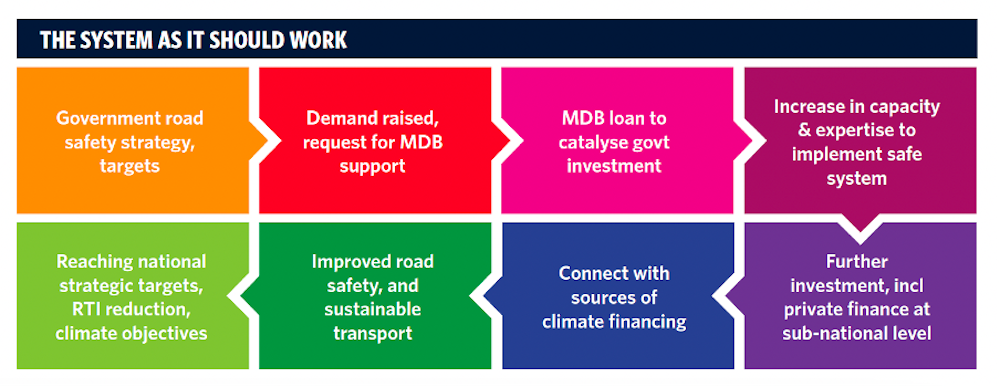 Source: FIA Foundation
Source: FIA Foundation
[1] iRAP (McMahon and Dahdah). 2008. The True Cost of Road Crashes: Valuing Life and the Cost of a Serious Injury. https://resources.irap.org/Research/iRAP_report_the_true_cost_of_road_crashes_EN.pdf
[2] World Bank. 2017. The High Toll of Traffic Injuries: Unacceptable and Preventable. © World Bank. http://hdl.handle.net/10986/29129 License: CC BY 3.0 IGO.
[3] World Bank (Wijnen, Dahdah, and Pkhikidze), 2025. The value of a statistical life in the context of road safety: a new value transfer approach, Traffic Injury Prevention. https://openknowledge.worldbank.org/server/api/core/bitstreams/5cbc8d27-9dad-495e-afb8-4a740543fe9a/content.
[4] ITF. 202. Reversing Car Dependency: Summary and Conclusions, ITF Roundtable Reports, No. 181, OECD Publishing, Paris. https://www.itf-oecd.org/sites/default/files/docs/reversing-car-dependency.pdf
[5] Ibid.
[6] European Cyclists Federation (ECF). 2018. The benefits of cycling: Unlocking their potential for Europe. https://www.ecf.com/media/resources/2018/TheBenefitsOfCycling_final-v2-3.pdf
[7] UK Department of Transport. 2016. The Value of Cycling. https://www.gov.uk/government/uploads/system/uploads/attachment_data/file/509587/value-of-cycling.pdf
[8] Political Economy Research Institute University of Massachusetts. 2011. Pedestrian and Bicycle Infrastructure: A national study of employment impacts. https://bikeleague.org/sites/default/files/PERI_Natl_Study_June2011.pdf
[9] WHO. 2016. Post-Crash Response: Supporting those affected by road traffic crashes. https://www.who.int/publications/i/item/post-crash-response-supporting-those-affected-by-road-traffic-crashes
[10] FIA Foundation & Child Health Initiative. 2025. Life Support: Advancing the Global Agenda for Financing and Action on Road Safety. https://www.fiafoundation.org/resources/life-support-advancing-the-global-agenda-for-financing-and-action-on-road-safety



